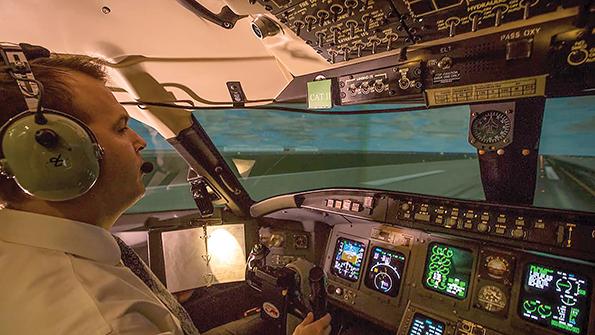
Twenty years ago, aeronautical science students did not arrive at Embry-Riddle Aeronautical University with hundreds of hours of flight time on a PC-based simulator. Nor did they own unmanned aerial vehicles equipped with remotely operated cameras and autoland control capability. Today’s “internet of wings” continues to advance, bringing new capabilities as well as vulnerabilities to all types of aircraft and, equally importantly, their operators.
As aircraft, computers and automation merge at a rapid pace, my workday priorities remain constant: to help make our students as successful as possible and to provide the aviation industry with critical research and a workforce prepared to innovate and adapt to technological advances in aviation. While COVID-19 has temporarily slowed our industry, we cannot stop preparing for the future of aviation.
In today’s environment, preparing students to become pilots and industry leaders goes beyond stick-and-rudder training. The future will be full of “flying computers.” As commercial airliners and airports become increasingly automated, aviation leaders must keep expanding their awareness of how current human-in-the-loop (HIL) research will revolutionize “business as usual” tomorrow.
Embry-Riddle has always prioritized safety, which has made us early adopters of simulation and virtual and augmented reality—critical tools in advancing our knowledge of human-machine interfaces. Our philosophy is that we do not train pilots; we prepare decision-makers. Our flight-training programs strive to incorporate an understanding of human factors to ensure that pilots of highly automated aircraft can respond swiftly in a crisis. Through our research programs, we continue to explore how aircraft systems can benefit from artificial intelligence and automation without causing a concomitant degradation of pilots’ stick-and-rudder skills. For example, we have ongoing research into whether onboard, real-time diagnostics help pilots maintain situational awareness despite increased automation on the flight deck.
The convergence in technology drives a convergence of disciplines. As educators, we must integrate expertise from multiple disciplines. A traditional silo mentality restricts our field of view. To get the highest performance from humans and their flying machines requires cross-disciplinary research and education.
In response to the merging of highly automated aircraft and their human operators, we have challenged our five colleges to create more cross-disciplinary initiatives and shared research, informed by industry advisory boards. We have convened aviation experts focused on flight, design, manufacturing and human factors to advise us in developing robust cyber- and big-data education, for example. We are also undertaking collaborative research with multiple airframe manufacturers—companies with different philosophies on the “allocation of control authority” between pilots and aircraft.
Our goal is to infuse all of our educational programs with a comprehensive perspective on human and machine performance in aviation. That requires competencies that will transform the industry, such as data analytics, cyber-resilience and advanced manufacturing. We also want graduates of our technical programs to have a solid business foundation so they will recognize how to monetize new opportunities.
This broadening of old boundaries is critical to aviation safety, efficiency and the economy. Designers need to understand pilots so their designs reflect human manual and cognitive skills. Pilots need to understand the aircraft’s architecture and logic so they do not sacrifice situational awareness and become complacent or overly reliant on automation. Scientists need to understand entrepreneurship to speed the evolution of ideas into products.
Driving technological innovation and research in higher education is vital to the future success of our industry. Discovery-driven education is equally important. Providing real-world, applied research opportunities for students will ease their entry into tomorrow’s aerospace workforce and elevate their value to employers.
Figuring out how best to keep “humans in the loop” as we develop more autonomous and intelligent systems is a defining challenge too complex for any single discipline or institution to address alone. Figuring out how best to keep “students in the loop” so they graduate with a strong foundation backed by a varied skill set is a defining challenge for aviation education.
P. Barry Butler is president of Embry-Riddle Aeronautical University.






Comments
This incremental approach to teaching and learning Automation has been very successful in training and checking outstanding corporate pilots.
Tom Owens
GV Series Pilot Examiner (Ret)
FlightSafety International